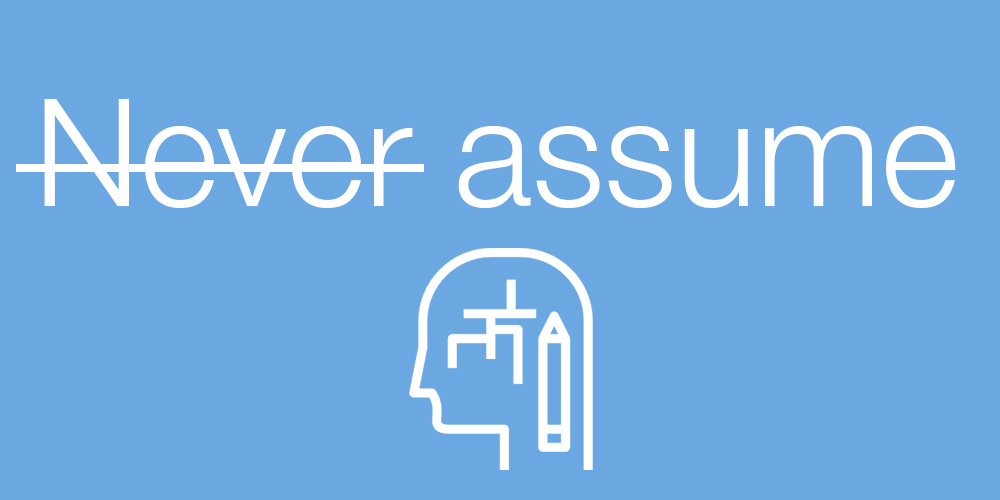In my previous post in this series I briefly described what constitutes a financial model and started to build an example of one by creating a budget and working on future cost projections. In order to do this properly I started accumulating assumptions. In this post I will delve further into what assumptions are.
In my opinion, a good financial model is built bottom-up, with assumptions accumulated on a separate sheet, which you can then transfer into the spreadsheet that lists your revenues and costs. The assumptions sheet is probably the only sheet in the model where the numbers are hard-coded and used throughout the model through links, meaning that if you need to change them, the formula will automatically update the rest of the figures. This makes the model live – by changing assumptions we can analyse how they impact the company’s cash flows, profits and other operating metrics.
When coming up with your assumptions, I would advise that you make them realistic. This is so that someone with no knowledge of your business was to review the model, they should not need to refer to anything other than the assumptions list; it should all make sense (unless there is industry specific data). This leads us onto the next step – where to gather your assumptions from.
Every assumption should come from a certain source (guessing is not good enough). Ideally, on the assumptions tab you will have a column entitled “Source”.
Below, I have listed an example of the sources that we used for the assumptions in the financial model for NOW Money. As you may already know from our website, NOW uses mobile technology to provide accounts, financial inclusion and a range of low-cost remittance options to low-income migrant workers in the UAE, providing them with direct access to a current account, debit card and remittance directly from our proprietary smartphone app.
Revenue
Based on the statement above, in order to derive realistic figures of projected revenues, we, at NOW had to define our target market and its size. Therefore, our list of sources for the revenues is based around the answers to these questions:
- Population numbers by countries in GCC come from Gulf Labour Markets and Migration and the International Monetary Fund
- Same data but more specific to Dubai comes from the Dubai Statistics Centre.
- In order to derive the figures on migrant workers we used the World Bank.
- Research on the average migrant worker’s salary was done through talking to representatives within the target market, which was backed up by different articles on the web, e.g. Guide2Dubai.
- Figures on remittance were obtained from the World Bank.
Costs
Again, based on the description of the services that NOW provides, the IT costs are crucial, followed by regulatory fees. We are in the process of setting up our business which means high regulatory, licensing and legal fees, as well as other administrative expenses.
- IT costs which include technology set-up costs, authentication services, developers’ salaries
- All were provided by the potential service providers. We spoke to several and used the best one.
- Regulatory fees:
- Licencing costs are usually openly accessible, for instance, for Dubai this website can be used.
- Legal fees for documentation certification were obtained by approaching a legal company
- Administrative expenses:
- Office rent prices can be obtained from any local property rental website. Think of how big the space should be by looking at your HR count plan.
- Subscriptions to Dropbox, Microsoft accounts, Accounting software can all be obtained on their websites.
- Travel costs can be estimated by looking up ticket prices and multiplying them by the average number of trips.
- Staff-related expenses:
- Salary estimates can be obtained by speaking to someone who works in HR (use your LinkedIn contacts)!
- Visa fees can be looked-up on the government website.
- Relocation costs – can be worked up by estimating the ticket costs and possible stays in hotels.
- Marketing and selling expenses: for this type of expense (and for any other) when we don’t know exactly when it will be incurred, we can link it to the appropriate driver.
In our case we decided the driver to be our customer numbers, which we used to derive a ratio to obtain the projected costs based on the driver.
For example, for the PR campaign the ratio is N of customers/100,000 customers, and we know (from the potential service provider) that a PR campaign for our purposes will cost around 3,500 AED, therefore if we have 10,000 customers in Year 1, we will spend 10,000 / 100,000 x 3,500 = 350 AED. At the same time, we can set a minimum of spend meaning (by using Max function in Excel) that even if we have less than 100,000 customers, we still have to spend, for example, 10,000 AED on marketing.
Remember that when you use your assumptions, do use them through links. Another useful thing to do is to assign the most used ones with a name through the Define Name function in Excel, which makes the use of the model much more easier.
At the end of this exercise, you will have a list of assumptions that you will use (as the ultimate goal) to derive projected profit figures.
You may be wondering why we haven’t covered working capital. This is because I will look at this in my next post, so that we can draft projected balance sheets, cash flows and income statements.







